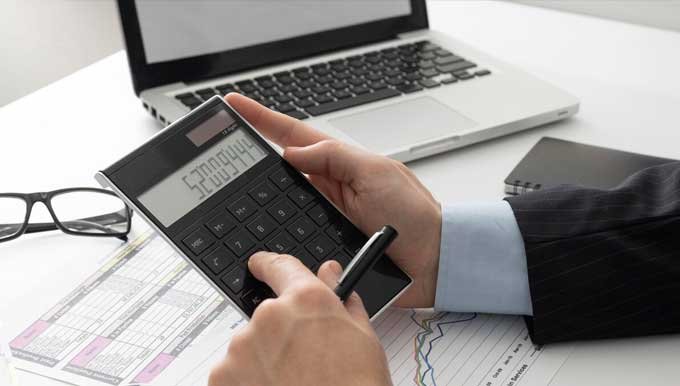Table of Contents
Current Ratio Calculator
Financial health is a critical concern for every business, and understanding your liquidity can make all the difference in managing day-to-day operations effectively. The Current Ratio Calculator offered by Dexovise is a free, easy-to-use tool that helps businesses measure their ability to meet short-term obligations using available assets.
Our calculator provides an accurate result in moments, just enter your figures and see where you stand.
More Business Calculators
What Is the Current Ratio?
The current ratio is a financial measure that tells you how well a business can cover its short-term liabilities with the assets it has on hand. It’s a way to gauge liquidity, which is essentially the ease with which a company can pay off debts due within the next year.
It is calculated by dividing total current assets by total current liabilities. A higher ratio indicates better liquidity, meaning the business can more easily cover its debts.
Current assets are the resources a business can turn into cash or use up within a year. Current Assets generally include:
- Cash and bank balances
- Accounts Receivables
- Marketable securities
- Inventories
- Pre-paid expenses
current liabilities are the amounts a business owes that must be settled within the same one-year period. This usually includes:
- Accounts payable
- Short-term debts
- Current Portion of long term debts
- Accrued expenses
- Tax payable
The current ratio matters because it shows whether a business has enough readily available resources to handle its immediate financial commitments.
How to Calculate the Current Ratio
Calculating the current ratio is straightforward once you have the right numbers in place. The formula is simple: divide your total current assets by your total current liabilities.
Current Ratio = Total Current Assets ÷ Total Current Liabilities
To do this manually:
- Gather your current assets (e.g., cash, bank balance, accounts receivable, inventory).
- Add them up to get the total current assets.
- List your current liabilities (e.g., accounts payable, expenses payable).
- Sum these to find total current liabilities.
- Divide total current assets by total current liabilities.
Our calculator simplifies this process, just input your figures, and it computes the result instantly, rounded to two decimal places.
How to Interpret the Current Ratio
The current ratio shows how many times your current assets can cover your current liabilities. It is a measure of liquidity that reveals whether you are in a position to settle your short-term obligations with the assets currently available. Such an understanding will help you determine where your business stands financially.
A current ratio of 1 or higher indicates that your current assets are sufficient to meet your current liabilities. For instance, a ratio of 2.50 means your assets can cover your liabilities two and a half times over, reflecting a strong financial position. However, a ratio below 1, such as 0.80, suggests that your current assets fall short of covering your obligations, which may signal a need to improve cash flow or reduce debt.
The appropriate level of this ratio can vary depending on the nature of your operations. A business with significant inventory, like a manufacturer, may require a higher ratio, perhaps 2.00, to account for assets that take time to convert into cash, whereas a service-based firm might manage well with a ratio of 1.50.
To work these out by hand, here’s what to do:
- Gather your current assets, like cash, accounts receivable, and inventory.
- Add them up for the total current assets.
- List your current liabilities, such as accounts payable and accrued expenses.
- Add those for the total current liabilities.
- Subtract total current liabilities from total current assets to get net working capital.
- Divide total current assets by total current liabilities for the working capital ratio.
Current Ratio Explained with an Example
Consider the following figures extracted from the balance sheet of a small business:
| Category | Amount ($) |
| Current Assets | |
| Cash | 10,000 |
| Bank Balance | 15,000 |
| Accounts Receivable | 20,000 |
| Inventory | 25,000 |
| Total Current Assets | 70,000 |
| Current Liabilities | |
| Accounts Payable | 30,000 |
| Expenses Payable | 10,000 |
| Category | Amount ($) |
| Current Assets | |
| Cash | 10,000 |
| Bank Balance | 15,000 |
| Accounts Receivable | 20,000 |
| Inventory | 25,000 |
| Total Current Assets | 70,000 |
| Current Liabilities | |
| Accounts Payable | 30,000 |
| Expenses Payable | 10,000 |
| Total Current Liabilities | 40,000 |
| 40,000 |
Using the formula:
Current Ratio = 70,000 ÷ 40,000 = 1.75
This figure shows that the small business has $1.70 in current assets for every $1.00 of current liabilities. Such a ratio indicates that if all short-term obligations were due immediately, the business could meet them with its available assets and still retain some resources.
Why the Current Ratio Is Important for Your Business
The current ratio is a key indicator of financial health for several reasons:
It assesses liquidity
The current ratio reveals whether your current assets are adequate to cover short term liabilities like supplier payments or operational expenses. A sufficient ratio ensures your business can fulfill these obligations without difficulty.
It influences lenders and investors
Financial institutions and potential investors examine this ratio when considering your business for loans or funding. A ratio above 1 demonstrates that your assets exceed your liabilities, enhancing your credibility and appeal to creditors.
It aids in financial oversight
Regular monitoring of your current ratio helps in identifying the potential imbalances, such as excessive inventory accumulation, long pending receivables or rising liabilities. This understanding enables you to address issues promptly and maintain control over your financial operations.
How the Current Ratio Calculator Can Benefit Your Business
The calculator by Dexovise delivers a precise measure of your liquidity by evaluating your current assets against your current liabilities. It is a resource that enables you to assess your financial position efficiently and accurately. Such a tool can greatly assist in managing your business’s financial health.
The calculator brings several practical advantages to your operations:
- It simplifies calculations: It enables you to enter the figures of current assets and current liabilities, head wise or in total. The calculator quickly computes your current ratio, eliminating the need for manual effort and reducing the chance of errors.
- It provides detailed insights: The breakdown of assets and liabilities offers a clear view of your liquidity, helping you identify strengths or areas needing attention within your financial structure.
- It supports planning: Understanding your current ratio through this tool allows you to make informed decisions, such as timing investments or addressing debt, based on your ability to meet short-term obligations.
This calculator is valuable because it saves time and enhances your ability to monitor and strategize effectively, ensuring your business remains on a stable footing.
How to Improve Your Current Ratio
You need to explore and determine how improving your current ratio, as calculated, can strengthen your business’s financial standing. Such improvement will help secure your business’s stability.
Here are key steps to enhance your current ratio:
- Increase current assets: Boost your cash reserves by improving sales or accelerate the collection of accounts receivable to ensure more funds are available to cover liabilities.
- Reduce current liabilities: Settle accounts payable where possible or negotiate extended payment terms with suppliers which allows to lower the immediate burden of debts due within a year.
- Manage inventory efficiently: Convert slow-moving stock into cash by offering discounts or refining purchasing strategies, freeing up resources to improve liquidity.
These actions matter because lenders often evaluate your current ratio when considering credit
Differences Between Current Ratio, Quick Ratio, and Cash Ratio
You need to understand and distinguish what sets the current ratio apart from other liquidity measures like the quick ratio and cash ratio for your business. Each ratio evaluates your ability to cover current liabilities but uses different asset categories. A clarity on the same will help you assess your business’s liquidity more comprehensively.
The differences are outlined below:
| Metric | Formula | Includes | Focus |
| Current Ratio | Current Assets ÷ Current Liabilities | All current assets (cash, receivables, inventory) | Overall ability to meet short-term obligations |
| Quick Ratio | (Cash and equivalents + marketable securities + AR) ÷ Current Liabilities | Cash, receivables, excludes inventory | Immediate liquidity without relying on inventory sales |
| Cash Ratio | (Cash + Cash Equivalents) ÷ Current Liabilities | Only cash and equivalents | Strictest measure, focusing solely on cash availability |
These distinctions are significant because they offer different perspectives on your liquidity. The current ratio includes all current assets, giving a broad view, while the quick ratio excludes inventory, useful if stock takes time to sell. The cash ratio, focusing only on cash, shows your position in the most urgent scenarios.
Understanding these variations ensures you can evaluate your financial health from multiple angles.
Explore More with Dexovise
Understanding your current ratio is just the start. Explore our services and insights for more financial tools and expert corporate finance services to grow your business effectively.




